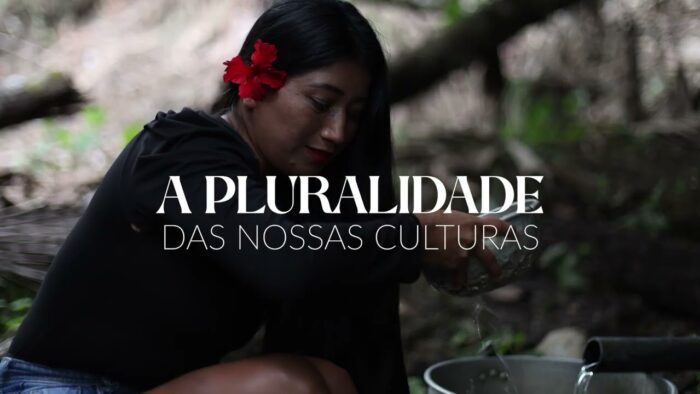Organization: UN Children’s Fund
Country: Chile
Closing date: 12 Jun 2017
Contract Type: Fixed Term AppointmentProposed Level: NO-CDuty Station: Santiago, ChileSupervisor: DeputyRepresentative
The fundamental mission of UNICEF is to promote the rights of every child, everywhere, in everything the organization does — in programs, in advocacy and in operations. The equity strategy, emphasizing the most disadvantaged and excluded children and families, translates this commitment to children’s rights into action. For UNICEF, equity means that all children have an opportunity to survive, develop and reach their full potential, without discrimination, bias or favoritism. To the degree that any child has an unequal chance in life — in its social, political, economic, civic and cultural dimensions — her or his rights are violated. There is growing evidence that investing in the health, education and protection of a society’s most disadvantaged citizens — addressing inequity — not only will give all children the opportunity to fulfill their potential but also will lead to sustained growth and stability of countries. This is why the focus on equity is so vital. It accelerates progress towards realizing the human rights of all children, which is the universal mandate of UNICEF, as outlined by the Convention on the Rights of the Child, while also supporting the equitable development of nations.
For every child, a champion
The Child Protection Specialist reports to the Deputy Representative for guidance and general supervision. The Specialist supports the development and preparation of the Child Protection (or a sector of) program/s and is responsible for managing, implementing, monitoring, evaluating and reporting of progress of child protection programs/projects within the country program. The Specialist provides technical guidance and management support throughout the programming processes to facilitate the administration and achievement of concrete and sustainable contributions to national and international efforts to create a protective environment for children against all harm and to protect their rights to survival, development and wellbeing as established under the Convention on the Rights of the Child, international treaties/framework and UN intergovernmental bodies.
The Specialist contributes to achievement of results according to plans, allocation, results based-management approaches and methodology (RBM) and UNICEF’s Strategic Plans, standards of performance and accountability framework.
How can you make a difference?
The strategic and effective advocacy, planning and formulation of child protection programs/projects and the achievement of sustainable results, contributes to achievement of goals and objectives to create a protective environment for children against harm and all forms of violence and ensures their survival, development and well being in society. Achievements in child protection programs and projects in turn contribute to maintaining/enhancing the credibility and ability of UNICEF to provide program services for mothers and children that promotes greater social equality in the country.
We are looking for a dynamic and innovative Child Protection Specialist to support UNICEF’s Chile programmes in the following areas:
Support to programs/projects development and planning
Program management, monitoring and delivery of results
Technical and operational support to program implementation
Networking and partnership building
Innovation, knowledge management and capacity building
Support to program/project development and planning.
Support the preparation/design and conduct/update of situation analysis for the child protection programs/projects and/or sector to ensure that current comprehensive and evidence based data on child protection issues are available to guide UNICEF’s strategic policy advocacy, intervention and development efforts on child rights and protection and to set program priorities, strategies, design and implementation plans. Keep abreast of development trends to enhance program management, efficiency and delivery.
Participate in strategic program discussion on the planning of child protection programs/projects. Formulate, design and prepare’ programs/projects proposal for the sector, ensuring alignment with the overall UNICEF’s Strategic Plans and Country Program and coherence/integration with UN Development Assistance Framework (UNDF), regional strategies and national priorities, plans and competencies.
Establish specific goals, objectives and strategies and implementation plans for the sector/s using results-based planning terminology and methodology (RBM). Prepare required documentations for program review and approval.
Work closely and collaboratively with internal and external colleagues and partners to discuss strategies and methodologies and to determine national priorities/competencies to ensure the achievement of concrete and sustainable results.
Provide technical and operational support throughout all stages of programming processes and to ensure integration, coherence and harmonization of programs/projects with other UNICEF sectors and achievement of results as planned and allocated.
Program management, monitoring and delivery of results.
Plan and/or collaborate with internal and external partners to establish monitoring benchmarks, performance indicators and other UNICEF/UN system indicators and measurement to assess/strengthen performance accountability, coherence and delivery of concrete and sustainable results for the assigned sector in child protection programs.
Participate in monitoring and evaluation exercises, program reviews and annual reviews with government and other counterparts to assess progress and to determine required action/interventions to achieve results.
Prepare/assess monitoring and evaluation reports to identify gaps, strengths/weaknesses in program and management, identify lessons learned and use knowledge gained for development planning and timely intervention to achieve goals.
Actively monitor programs/projects through field visits, surveys and/or exchange of information with partners/stakeholders to assess progress, identify bottlenecks and potential problems and take timely decisions to resolve issues and/or refer to relevant officials for timely resolution.
Monitor and verify the optimum/appropriate use of sectoral program resources (financial, administrative and other assets) confirming compliance with organizational rules, regulations/procedures and donor commitments, standards of accountability and integrity and ensuring timely reporting and liquidation of resources.
Prepare regular/mandated program/project reports for management, donors and partners to keep them informed of program progress.
Technical and operational support to program implementation
Provide technical guidance and operational support to government counterparts, NGO partners, UN system partners and country office partners/donors on interpretation, application and understanding of UNICEF policies, strategies, processes and best practices and approaches on child protection and related issues to support program management, implementation and delivery of results.
Arrange/coordinate availability of technical experts with Regional Office/HQ to ensure timely/appropriate support throughout the programming/projects process.
Participate in child protection program meetings including program development and contingency planning discussions on emergency preparedness in the country or other locations designated to provide technical and operational information, advice and support.
Draft policy papers, briefs and other strategic program materials for management use, information and/or consideration.
Networking and partnership building
Build and sustain effective close working partnerships with relevant government counterparts, national stakeholders and global partners/allies/donors/academia through active networking, advocacy and effective communication to build capacity, exchange knowledge/expertise and to reinforce cooperation to achieve sustainable and broad results in child protection.
Prepare communication and information materials for CO program advocacy to promote awareness, establish partnership/alliances and support fund raising for child protection programs and emergency interventions.
Participate and/or represent UNICEF in appropriate inter-agency (UNCT) discussions and planning on child protection and related issues to collaborate with inter-agency partners/colleagues on UNDAF planning and preparation of programs/projects ensuring organizational position, interests and priorities are fully considered and integrated in the UNDAF process in development planning and agenda setting.
Innovation, knowledge management and capacity building
Apply/introduce innovative approaches and good practice to build the capacity of partners and stakeholders and to support the implementation and delivery of concrete and sustainable program results.
Keep abreast, research, benchmark and implement best practices in child protection management and information systems. Assess, institutionalize and share best practices and knowledge learned.
Contribute to the development and implementation of policies and procedures to ensure optimum efficiency and efficacy of sustainable programs and projects.
Organize and implement capacity building initiatives to enhance the competencies of clients/stakeholders to promote sustainable results in child protection and related programs/projects.
For every Child, you demonstrate:
Core Values:
Commitment
Diversity and inclusion
Integrity
Core competencies:
Communication (II)
Working with people (II)
Drive for results (II)
Functional Competencies:
Leading and supervising (I)
Formulation strategies and concepts (II)
Analyzing (III)
Relating and networking (II)
Deciding and Initiating action (II)
Applying technical expertise (III)
To qualify as a champion for every child you will have:
Education:
An advanced University degree in international development, human rights, psychology, sociology, international law and other social science field is required.
Experience:
A minimum of 5 years of professional experience in social development planning and management in child protection and/other related areas at the international level some of which preferably were served in a developing country is required.
Relevant experience in child protection and related areas, program/project development and management in a UN system agency or organization is an asset.
Experience in both development and humanitarian contexts is an added advantage.
Language Requirements:
Fluency in Spanish and English. Knowledge of another official UN language or a local language is an asset
Candidates must be citizen of Chile to be considered eligible for this post. Please note that the National Officers(NOs) are locally recruited staff and therefore, candidates are personally responsible for any travel and accommodation arrangements.
UNICEF is committed to diversity and inclusion within its workforce, and encourages qualified female and male candidates from all national, religious and ethnic backgrounds, including persons living with disabilities, to apply to become a part of our organisation.
How to apply:
UNICEF is committed to diversity and inclusion within its workforce, and encourages qualified female and male candidates from all national, religious and ethnic backgrounds, including persons living with disabilities, to apply to become a part of our organization. To apply, click on the following link http://www.unicef.org/about/employ/?job=504929


